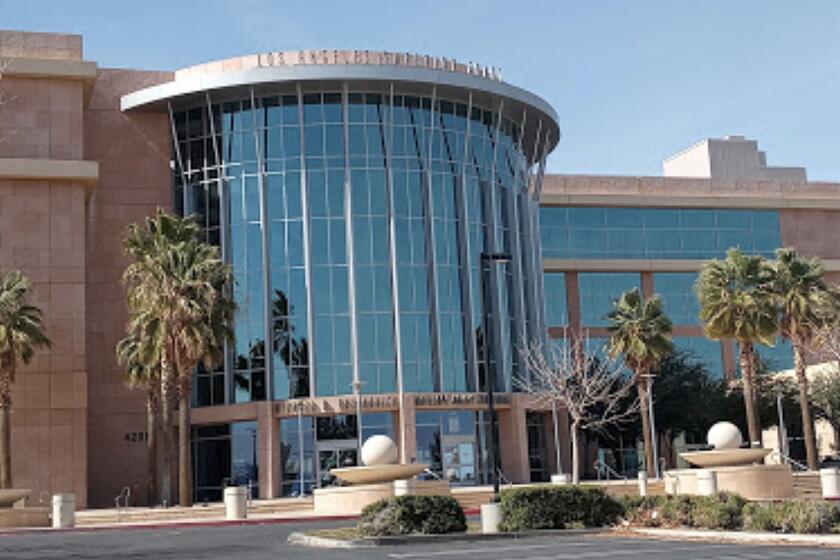Civic Tide : North County Pushes to Revitalize Its Once-Decaying City Centers
- Share via
The splintered remnants of old-time downtown Brea, unceremoniously removed years ago in the name of progress, lie scattered among the city’s storage yards.
There’s the “Brea Welcomes You” sign that once arched over Brea Boulevard, the Old Church steeple, and the facade of Sam’s Place, a popular tavern where a mug of beer once cost 30 cents and a shot of whiskey went for about half a buck.
Soon, these bits and pieces of the once-bustling downtown will be spruced up and put back in public as part of a costly revitalization movement sweeping not only Brea, but many North County communities trying to recapture economic vitality and a certain civility from a gentler era.
“Cities are rebuilding their pasts to create their futures,” said Louis Masotti, an urban development specialist at UC Irvine. “Old-style downtowns are coming back in vogue.”
Besides bolstering civic pride, the efforts are aimed at increasing city sales tax revenue, which municipalities rely on to meet growing demands for public services without raising taxes.
While investing in downtowns can be risky, merchants and developers stand to profit if the fledging districts become popular shopping or night life destinations. In some cases, redevelopment agencies provide financial incentives to help spark the rejuvenation of troubled areas.
The renaissance comes after decades of physical and financial decline at the hands of glitzy shopping malls and large discount retailers that lured shoppers away from the mom-and-pop shops and stand-alone department stores. Multiple-screen theaters undercut business at the ornate movie palaces that were once a mainstay of the downtown social scene.
At the same time, planned communities in wide open South County beckoned new suburbanites away from the aging communities in North County, where freeways bypassed the central districts.
By the 1980s, some downtowns found themselves filled with bleak boarded-up storefronts, and civic leaders recognized that something needed to be done to pump new life into communities born in the early days of endless orange groves and booming oil fields.
Now, cities are looking to regain some of their bygone luster and their sense of self, capitalizing on--and in some cases fabricating--their historic character, central location and pedestrian-friendly ambience to entice visitors.
For example:
* In downtown Fullerton, new restaurants, coffeehouses and specialty shops have opened in once-dormant Art Deco storefronts. The California Hotel, once a Spanish Colonial estate that had suffered years of neglect, was recently renovated into a stylish shopping arcade.
* In Old Towne Orange, antique marts now occupy shuttered grocery and clothing stores, a microbrewery soon will fill the Santa Fe train depot, and a new four-star restaurant recently opened in an old church.
* Placentia business owners are placing a new face on the city’s historic Placita Santa Fe district, painting and redecorating the fronts of the Mexican-influenced markets, restaurants and shops.
North County cities are not the only ones laying cobblestone walkways, planting shade trees and installing old-fashioned street-lamps. Throughout the nation, cities from Baltimore and Boston to San Jose and Seattle are turning to historic preservation and urban renewal projects to eliminate blight, cut crime and spur economic opportunity.
“People are looking for a dream and that dream is having a place that feels like a community, feels like home,” said Kennedy Smith, who directs the National Main Street Center, a Washington, D.C.-based project. “Fifty years ago, people may have valued things that were new. Now people want to preserve historical buildings that help define what a place is.”
Chapman University professor Fred Smoller agreed. ‘When you go to a newer city like Irvine with no downtown, you have a sense of being lost,” he said. “These older downtowns like Orange help orient people. . . . They provide a center.”
But resurrecting past glories doesn’t come cheaply. Cities have pumped tens of millions of dollars into downtown projects. The Brea revitalization is costing the city and developers more than $100 million, while Fullerton has devoted more than $20 million to its renewal.
Such big investments don’t always bring bustling crowds that many merchants hope for.
Some critics complain that cities are spending too much taxpayer money on the revitalization, questioning whether the funds would be better spent on more basic municipal services such as police protection or recreational activities.
Others fear that some redevelopment efforts are focused more on boosting sales tax revenues than on preserving historic buildings.
Still, many residents are pleased with the improvements they see.
“Downtown has become a nice place to go at night,” said James Campbell, a Fullerton resident who frequents the restaurants, coffeehouses and live-music clubs along Harbor Boulevard. “You can just walk around the old streets, grabbing dinner at an Italian restaurant and getting coffee after that. It’s a different atmosphere than a shopping mall.”
The most dramatic transformations are taking place in Brea and Anaheim, where officials bulldozed blocks of their core districts years ago, trying to re-create their pasts with commercial shopping developments and new housing projects that mimic old-style homes.
Brea officials are looking to match the commercial successes of Long Beach’s Pine Avenue, Old Pasadena and Santa Monica’s Third Street Promenade, all of which cultivated a bustling downtown feel from another era.
The redevelopment changed the face of Brea Boulevard. Gone were Sam’s Place, the Brea Hotel and the Red Lantern Theater, where Judy Garland once performed.
Replacing the old business district is a Ralphs grocery store, a Boston Market fast-food restaurant and a bagel shop, among other developments that lure more customers but lack historic character.
Parts of those old structures, such as Sam’s Place, were carted off to a maintenance yard to someday be replanted in a new “Heritage Block.” “It’s a tremendous challenge to re-create a downtown,” said Brea City Manager Frank Benest. “But when you create a downtown with some heart and soul, it’s worth the risks” the city is taking by helping finance the revitalization.
Some longtime residents lament the destruction of the Brea Boulevard they grew up enjoying, but city officials insist that many of the historic buildings were in a state of disrepair and simply could not sustain a thriving commercial corridor.
Other cities have taken a different approach. Fullerton and Orange, for example, have placed a premium on preserving and restoring their pasts, rather than re-creating them.
“Our real effort has been to preserve an old-fashioned downtown, not just tear everything down to create sites for retail,” said Gary Chalupsky, Fullerton’s redevelopment director.
“Downtown for us is more than just some boutiques,” Chalupsky added. “We see downtown as the center for religion, culture, education, government, financial [services] and transportation.”
Indeed, downtown is home to the city’s civic center, Fullerton College, the Fullerton Museum, and several historic churches. Over the last decade, several new restaurants have opened and a thriving antique store district has emerged.
Orange, with its famed traffic circle ringed by century-old brick buildings, has also placed preservation ahead of profit. This strategy has produced one of California’s most popular antique store districts, but some residents said the area now needs to broaden its focus and attract new businesses to complete the city’s downtown feel.
Linda Boone, the city’s director of economic development, said Orange is interested in luring more businesses into downtown, but doesn’t see the circle becoming an “entertainment destination” like Santa Monica or Pasadena.
“I don’t think it should become a single-purpose place,” Boone said. “I like the idea of having drug stores, banks, clothing stores and bookstores in town--a little community that has everything.”
Others agree, saying that some revitalization efforts throughout the nation are becoming formulaic and are merely trying to imitate a “Main Street, USA” that exists only at Disneyland.
“Every downtown wants to become Old Pasadena. It’s a talisman that gets people excited,” said David Zenger, a Fullerton preservationist.
Zenger fears that by making downtown trendy and economically successful, the city will sacrifice the area’s distinctive atmosphere.
Such a fate is befalling Brea and Anaheim, according to Zenger and other preservationists.
“In Brea and Anaheim, they pretty much wiped everything out and started over,” he said. “They’ve been sanitized beyond recognition.”
Some merchants and residents also note that pricey overhauls are no guarantee that struggling neighborhoods will blossom economically and culturally.
Anaheim placed a family ice skating center, designed by world famous architect Frank O. Gehry, in the center of downtown with the hope it would draw new businesses and visitors to the area. Merchants say that it has not sparked much interest.
“People said the rink would increase business so much that we wouldn’t know what to do,” said John Machiaverna, owner of a jewelry store and coffeehouse in downtown Anaheim. “But it hasn’t happened. A lot of people who go there don’t come to the shops. I haven’t seen much of a difference.”
Machiaverna opened his businesses about four years ago, just as the redevelopment effort was in full swing. “I think we are on the right path,” he said. “But we are not there yet.”
Brea officials hope their new downtown will be more successful. However, the effort has left some old-timers bitter at what has been lost.
“It’s a shame what they did to downtown,” said Seaton H. Greaves, former owner of the old Sam’s Place tavern. “[My bar] was a happy-go-lucky place, an old-time place . . . where people all knew each other. Whatever they do with it now it won’t be the same. You can’t re-create something like that.”
More to Read
Sign up for Essential California
The most important California stories and recommendations in your inbox every morning.
You may occasionally receive promotional content from the Los Angeles Times.











